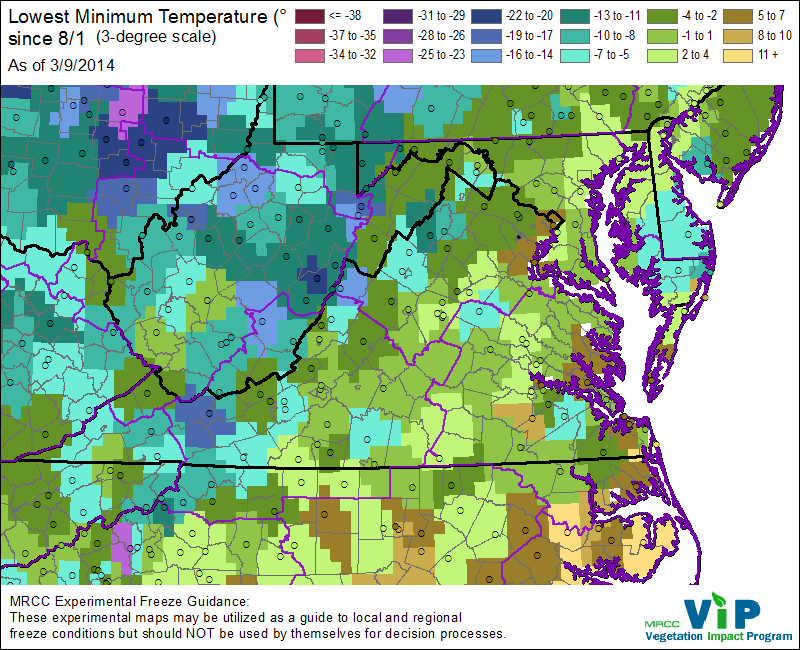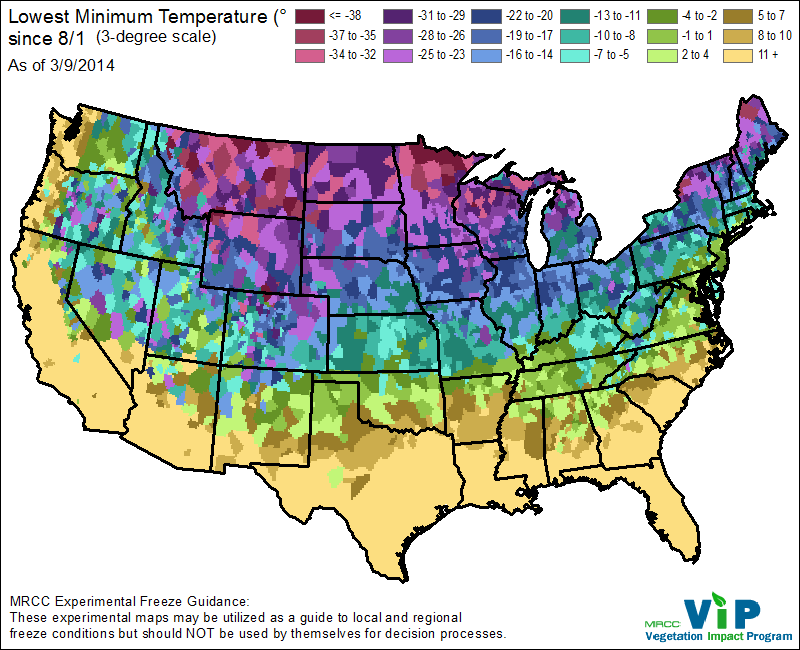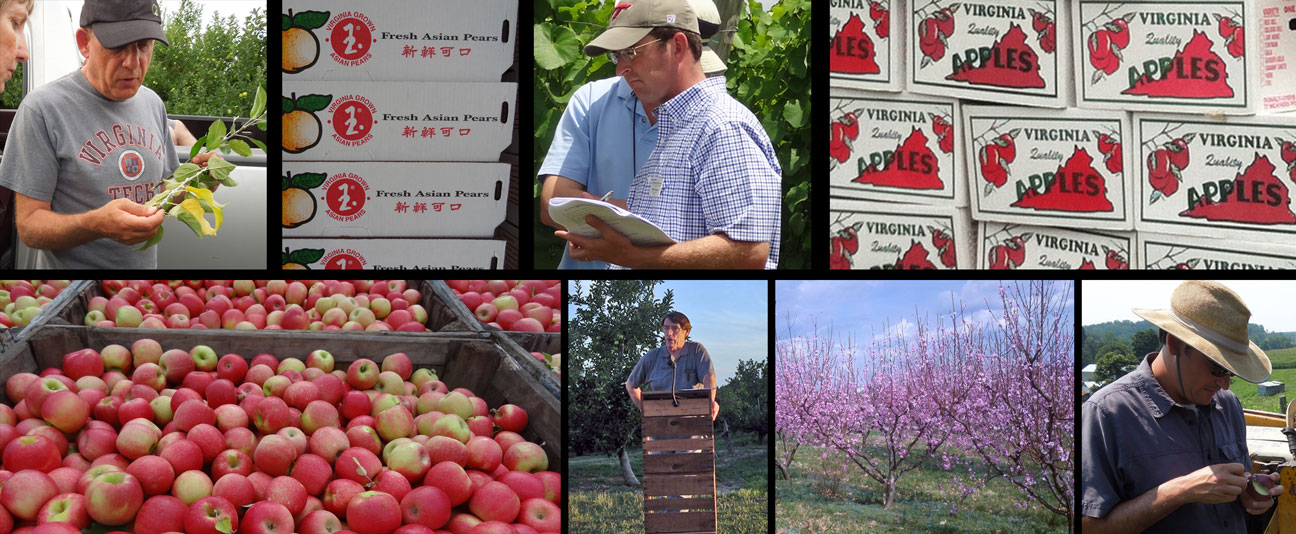At the annual Cumberland-Shenandoah Fruit Workers Conference in Winchester, researchers and extension personnel from each of the attending states prepares a review of the past growing season. These reports are published in the Conference Proceedings, but we thought that a broader audience might also be interested in our assessment of the 2013 growing season. Please contact us if you have any additional thoughts or comments.
Call of the States – Virginia
Horticulture- Greg Peck
The 2013 growing season was marked with abundant rains in May, June, and July and relatively cool conditions from mid-August through to the end of harvest. Spring conditions were generally favorable for planting, and many acres of new orchard have been established in Virginia over the past year. On April 22 and May 15 there were light spring frosts in the Winchester area. Additionally, there was cool weather with reduced honeybee flight when many fruit trees were flowering. With the exception of russetted fruit in some low-lying areas, neither the peach or apple crops appeared to be significantly negatively affected by the frosts. In fact, many growers reported having fewer superficial blemishes and russets than would be expected from the cool humid conditions. However, the sweet cherry crop in Winchester, as well as many other locations in the mid-Atlantic displayed severe fruit drop due to these environmental factors, as well as potentially low light levels that occurred prior to pit hardening. Amongst the tree-fruit crops in Virginia, sweet cherries once again proved to be the most disappointing. In general, apple fruit set was more than adequate and most growers had a full crop.
Growers throughout the Commonwealth reported above average yields for both peaches and apples. Indeed, it would not be surprising if Virginia’s statewide apple yields in 2013 were greater than from any year in the past decade, if not longer. Indeed, many growers had difficulty sourcing sufficient labor and towards the end of harvest enough bins into which to pick their crop. However, excellent crop conditions were also reported in Pennsylvania, New York, Michigan, and elsewhere in the Eastern US, so prices were lower than grower expectations. In addition to the abundant yields, fruit size, color, and overall quality were quite good.
Entomology- Chris Bergh
Oriental Fruit Moth biofix was April 11, Codling Moth on May 2; both within historical norms since 2000. Cool wet weather following biofix resulted in slow Degree Day accumulation. There was very low internal worm pressure in 2013; was this effects of weather? Cool spring also resulted in prolonged activity of Plum Curculio and injury well into the summer. There was an unusual instance of lots of pansy spot on some apple varieties throughout central and northern VA and extending further north. Also foliar injury: Western Flower Thrips and/or soybean thrips.
Brown Marmorated Stink Bug (BMSB) populations were very high by late summer, based on captures in traps. Ideal growing conditions maintained lush condition of wild hosts, prompting the question,” Did BMSB stay longer on them? (considering the huge amount of vegetative growth on peach).” BMSB injury at harvest managed quite well in most orchards in which targeted sprays used. Many growers are now using Alternate Row Middle sprays. There were examples of high levels of BMSB injury to late-season apples when BMSB was not targeted as in processing blocks. San Jose Scale is an increasing concern behind BMSB programs. Mites continue not to be an issue. The biggest secondary pest concern is late-season Woolly Apple Aphid outbreaks; Diazinon worked very well, but not Movento, Provado or Closer. There was Issue with Diazinon restrictions on fruit for baby food; Also there was a potential issue with compatibility between diazinon and captan.
Pathology- Keith Yoder
2013 was an “average” disease year in the Winchester area, but with progressively heavier pressure farther south. There was no apple scab infection period in the Winchester area until Apr 17. Scab lesions from April 17 were present by May 6, and then heavier secondary occurred May 6-24. Sterol inhibiting fungicide resistance and QoI resistance, confirmed in 2012, are being dealt with in the Winchester area. Cedar-apple rust spores were released as early as April 12 and discharge continued into June; but for the most part, susceptible blossoms escaped quince rust infection. Our test treatments in 2013 again bore out the value of following likely cedar rust infection periods with an SI fungicide for after-infection control. In 2013, mildew conidia were available April 11 a week ahead of scab infection, and we had 42 dry weather “mildew infection days” from April 11-June 14. Summer rains prolonged growth and the length of shoot susceptibility, and secondary mildew infection was common on susceptible varieties. In spite of some earlier indications, some (Maryblyt) predicted fire blight days fell short of the requirements for infection and most infection events occurred mostly only on late bloom.
For purposes of predicting development of the sooty blotch and flyspeck (SBFS) fungal complex, we started wetting hour accumulation from May 13, and by July 1, and had reached the 250-wetting hour threshold for specific treatment against the SBFS fungal complex, about five weeks later than last year. Leaf spot problems on Golden Delicious in the Winchester area were primarily necrotic leaf blotch, not the Glomerella leaf spot which suddenly became prominent in late August 2012. The late season was not conducive to rot development in the Winchester area; however, with heavy rainfall in southern VA and western NC, Glomerella was again a problem in those areas in 2013. Some samples of rot spots from those areas developed into bitter rot and some were white (Bot) rot.
Grape disease development followed a similar pattern, with generally heavier disease pressure by wet weather diseases farther south into Virginia.




